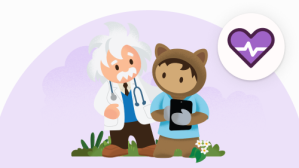The Indian healthcare industry provides state-of-the-art treatment and preventive care to 1.4 billion people scattered across the country. It is also supported by outstanding research and development facilities. Today, this massive industry is having to contend with –
- Rising input costs and high operational expenses;
- Shortage of experienced professionals: WHO states that by 2030, there will be a projected shortage of 10 million healthcare workers worldwide, particularly in low- and middle-income nations; and,
- Rising patient expectations for customised experiences: Instead of the broad-market approach adopted by healthcare providers in the country, patients are now demanding personalised experiences suited to their needs, such as virtual care services and wider use of wearable device data in clinical healthcare.
The panacea to these ills is a planned digital transformation of healthcare technology that allows it to combine newer technologies with human skill and experience. One such technology that offers immense benefits is AI-enabled automation which can help healthcare become more affordable, efficient, individualised, and inclusive.
How AI and automation can help improve the pulse of the healthcare industry
From taking over routine, low-value tasks, to enabling predictive and proactive service, AI-enabled automation solutions are driving a much-needed digital transformation in healthcare. Here are some common challenges that AI and automation are solving for the healthcare industry:
1. Inconsistent data consolidation
The healthcare industry has a plethora of data sources, including:
- Electronic Health Records (EHRs)
- Research studies
- Condition-specific databases
- Data from wearable technology
- Physical records maintained by hospitals
- Claims history
- Vital records
Due to the sheer variety of data sources, crucial data that can influence patient outcomes are stored in different systems. Most often, parts of such fragmented data are either misplaced or unusable.
Tip: To provide comprehensive healthcare solutions, healthcare organisations must consolidate data from separate systems in one place. They must also equip providers with digital solutions that can quickly navigate, sort, and analyse these datasets to provide timely insights.
Solution:
An AI-enabled platform that integrates data from any system to create rich, contextual patient profiles, providing a 360-degree view of the patient. These comprehensive patient profiles should also be easily accessible on any device so that healthcare professionals have relevant patient information at their fingertips all the time.
2. Complex patient management processes
Patient management is an inherently long and complex process. It is an end-to-end journey from intake, examination, evaluation, and diagnosis to intervention and follow-up. This requires the involvement and alignment of several departments within healthcare organisations. However, seamless inter-departmental coordination can be a challenge for many healthcare organisations; due to multiple reasons such as ineffective information handovers, miscommunication, personal conflict, and more.
Tip: To connect isolated systems and automate the entire process, healthcare organisations should focus on implementing a smart patient management system. By simplifying and streamlining the processes right from patient acquisition to service delivery, healthcare organisations can deliver personalised customer experiences efficiently.
Solution:
AI-driven chatbots and virtual assistants can collect or disseminate patient information 24/7. They can also be programmed to manage appointments and route patients to the appropriate department when necessary.
3. Delayed diagnoses or lack of systems to offer preventive care protocols
High demand and a skewed doctor-patient ratio (especially in semi-urban and rural areas) can translate to inadequate coverage of medical services, leading to delayed diagnoses or preventive care.
Tip: Healthcare organisations should focus on extensively automating routine administrative and iterative tasks. This will enable healthcare professionals and support teams to focus all their efforts on patient service.
Solution:
The availability of a unified, real-time EHR and device insights can help healthcare professionals better understand the patient’s problem quickly and collaborate on treatment where necessary. This helps save precious time and effort.
4. Lack of attention to personalised care
Integrating personalised healthcare into routine clinical care can be challenging. It requires healthcare professionals to make sense of complex datasets, get quick access to individual customer data and use it to make timely decisions. In other words, healthcare professionals need to have the capacity to handle patient management tasks like fixing appointments, handling check-ins, invoicing, insurance queries, discharge formalities, etc., with ease and expected sensitivity.
Tip: Data sourcing at every patient touch-point has to be unified in such a manner that all the teams involved have accurate, real-time data comprising the patient’s medical history and other details such as socio-economic factors, family history, lifestyle patterns, and so on.
Solution:
Integrating clinical data (such as past and current medications) and non-clinical data (such as social determinants of health) in real time. This helps create a holistic patient profile that helps personalise care plans and enrich the patient’s experience – at scale.
5. Ineffective and overburdened communication channels
Healthcare organisations often grapple with complex communication channels. Different shifts and variable patient loads could lead to staggered or disconnected interactions between different teams as well as departments. Additionally, most doctor-patient communication relies heavily on traditional, 1-to-1 methods, which burdens existing channels.
Tip: In order to provide patients with all the information they need in a clear, concise manner healthcare professionals need to be proficient in multiple communication methods, including digital, written, and verbal.
Solution:
Providers can connect with each other or with patients through automated alerts and messages across devices. Using different channels such as text, calls, or chat, providers can offer instant support to customers and also recommend services like wellness programs. Apps can also be used to inform patients about care plans, knowledge resources, and more.
Creating a personalised, patient-centric healthcare model using AI-powered automation
Salesforce Healthcare Cloud helps transform healthcare by creating healthier relationships between patients and healthcare providers. With Healthcare Cloud, providers can:
- Automate key iterative processes, reduce costs, and streamline operations
- Access relevant patient data, including conditions, medications, and communication preferences. This helps create a 360-degree view of the patient.
- Easily review tasks, and all conversations with patients, and prioritise patients based on urgency
- Send secure messages such as surveys and appointment reminders to patients and their caregiver network
With Healthcare Cloud, healthcare providers can build an intelligent health system, design better patient experiences and truly personalise healthcare delivery. Powered by AI-enabled capabilities and intelligent automation, Healthcare Cloud supports smarter decision-making, while increasing productivity and cost savings for healthcare organisations.

























